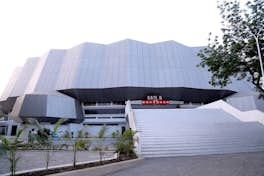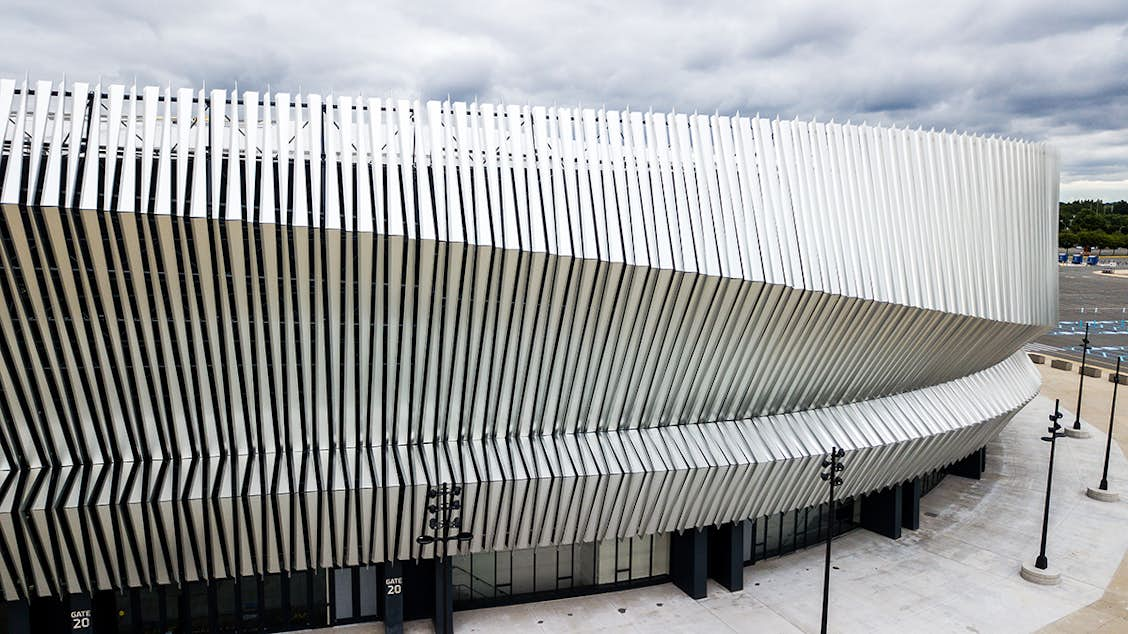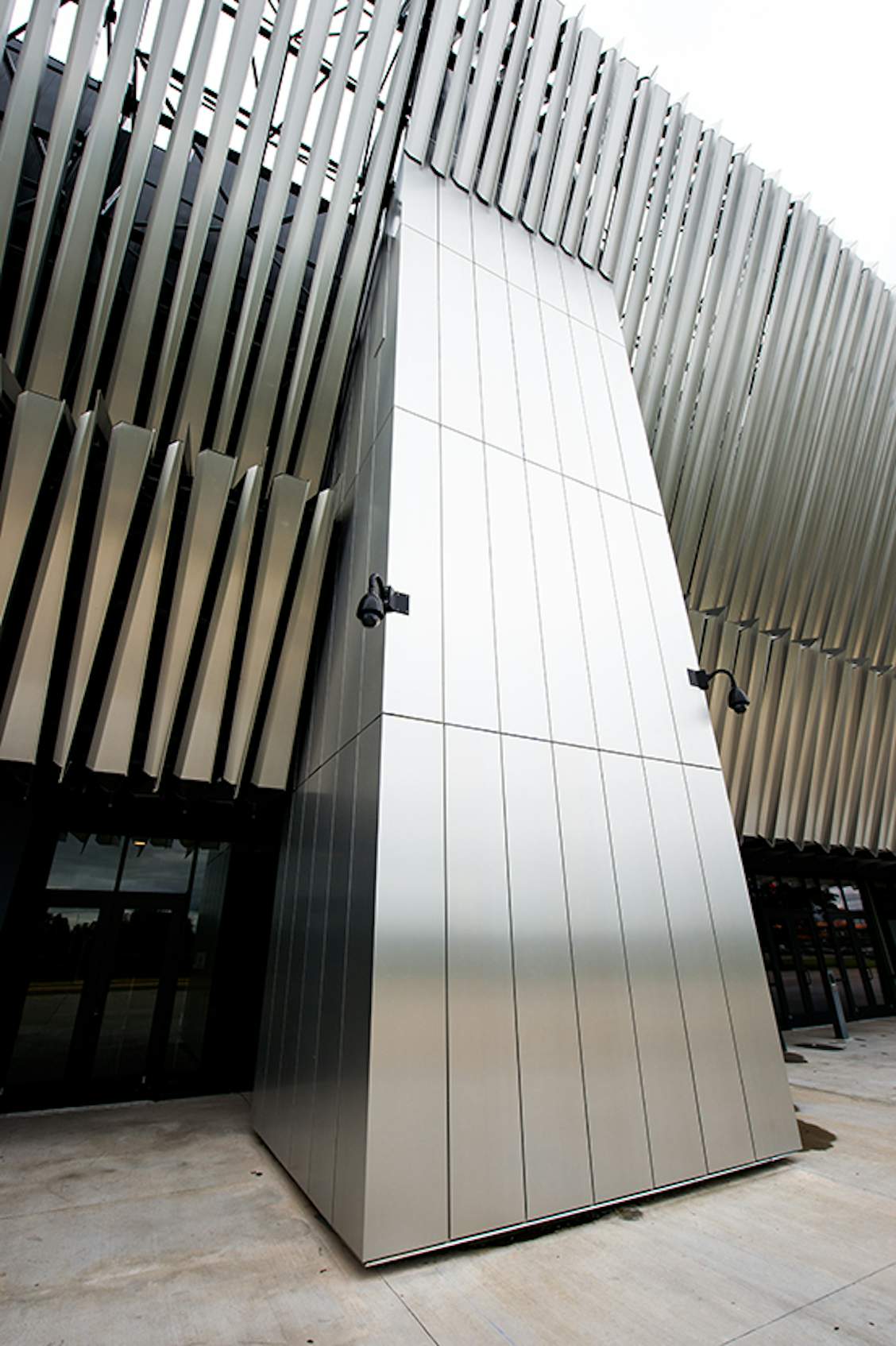“Each of these fins has six folds,” he said. “We knew this would be a complicated folding and routing process. We wanted clean lines and several fields of interest to look at as you walk closer to the individual fins. The ALUCOBOND® material expresses flexibility. It’s very easy to form into precise shapes. We also loved the natural brushed aluminum finish. It picks up the ambient light and color well during different times of day and reflects the sky and sunset. As the crowd moves into the Coliseum, colors from their clothes and the surrounding trees also get reflected into the material.”
The metal design system was created through “100 percent digital modeling,” according to Cerone, who said this process required SHoP crews to scan the entire exterior of the Coliseum with 3-D lasers to create digital files that would ensure the metal system fit onto the building while allowing the fins and space frame to be pre-fabricated in controlled environments.
“These scans allowed us to coordinate with the contractors to a fraction of an inch,” said Cerone, who said this cutting-edge digital design process was one that SHoP had prototyped on a previous project. “Everyone working on this project was digitally facile. We had proven this process before and continue to push it to the industry. Inevitably, we expect to see more design and fabrication moving in this direction for its precision, speed and efficiencies. In this project, we were able to accurately coordinate the fabrication of 4,700 uniquely folded fins that were unfolded on the site in pairs. They fit perfectly. We loved collaborating with the manufacturers and contractors on this project.”
Sobotec crews spent approximately six months fabricating the fins from custom 38-foot-long sheets of ALUCOBOND® PLUS, according to Vlad Sobot, president, Sobotec, which utilized the architect’s 3-D models to create shop fabrication drawings that could be read by the company’s CNC router.
“These panels were fabricated into such a unique shape – similar to a shark fin,” said Sobot. “The fin comes out and then tapers in; the panel then is adjusted and reversed to taper the other way. … Not one fin is the exact same size as the other. As one fin comes out bigger in the design, the fin next to it becomes smaller.”
The overall visual impact of these variably sized fins is “an undulating line that looks like an ocean wave,” according to Sobot, who credits Sobotec’s engineering capabilities and ALUCOBOND® to the unique design’s fabrication success.
“ALUCOBOND® is the only material that can actually produce these shapes,” said Sobot. “It would be impossible to make these shapes with solid aluminum sheets; they can’t be folded in this fashion. … Additionally, when you look at renovating an existing structure that is designed for a certain weight load, it might not be able to withstand a heavy material. ALUCOBOND® is so light that it’s not usually a problem on a retrofit. It's is very unique; it’s not your typical metal panel.”








